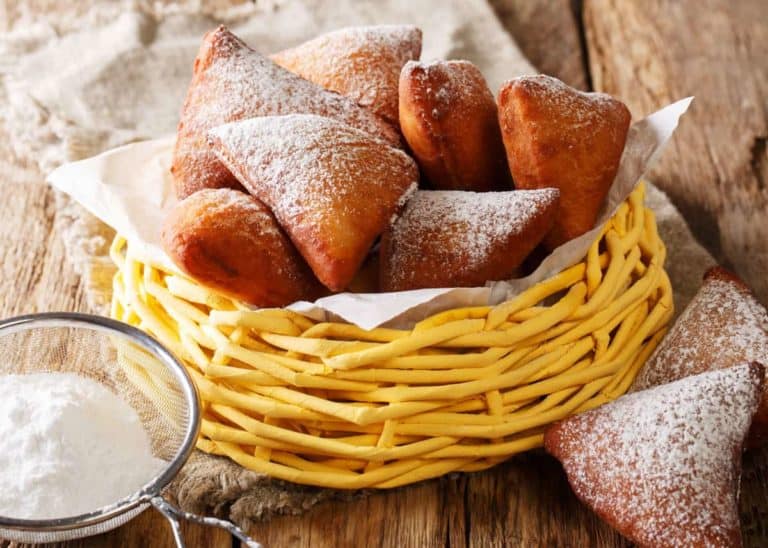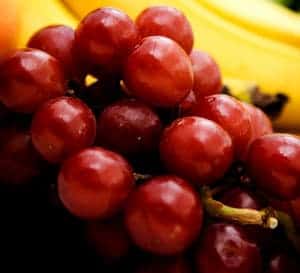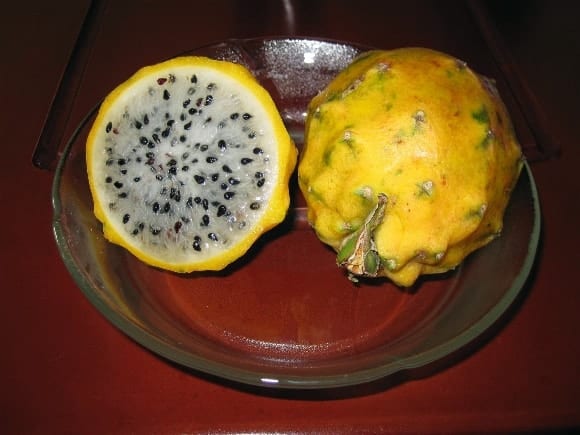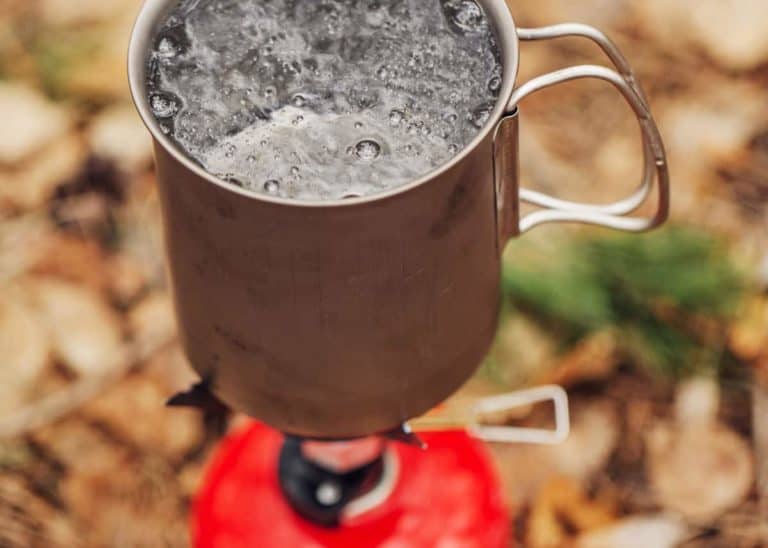16 Plantain Nutrition Facts (Calories Guide) 6 Health Benefits
Plantains are an inexpensive, healthy, and delicious food. In this post, you’ll learn about plantain nutrition, including calories and other nutrients. We cover 22 nutritional elements and 16 facts regarding nutrition and general plantain facts.
Plantains have been eaten in Africa, Asia, and Latin America for centuries, but the Western world is only just beginning to realize the many nutritional benefits of the plantain.
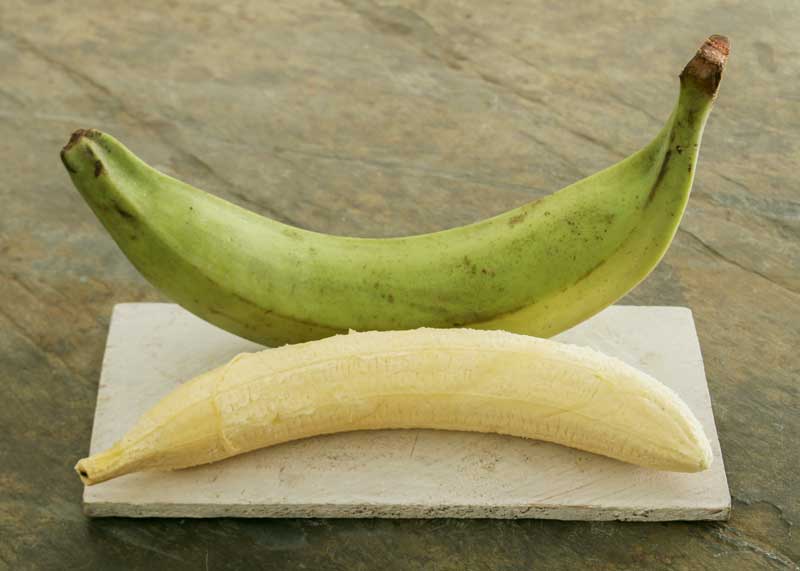
Plantains are a staple of many tropical countries. And for good reason. Plantains are also cheap, tasty and highly versatile in the kitchen, so whether you’re interested in sweet snacks or savory stews and meat dishes, they’re a must-have for your pantry!
Plantain Calories
How many calories in a plantain? A medium sized plantain has 372 calories. This is based on a weight of 0.5 lbs. (240g). Of course, the weight doesn’t include the peel.
- One medium sized plantain: 372 calories
- 100 grams of plantain: 155 calories
- 1 cup (139 grams): 215 calories
The calories and nutritional information are based on the plantain only. As with any fruit or vegetable, these will change depending on how the plantain is prepared and seasoned. For example, frying a plantain is going to add fat from all of the oil, and salting it will add sodium.
Another thing to note is that one plantain does not equal one cup of plantain. One cup of plantain is around 140 grams, but plantains themselves can range from 200 to 300 grams depending on their size.
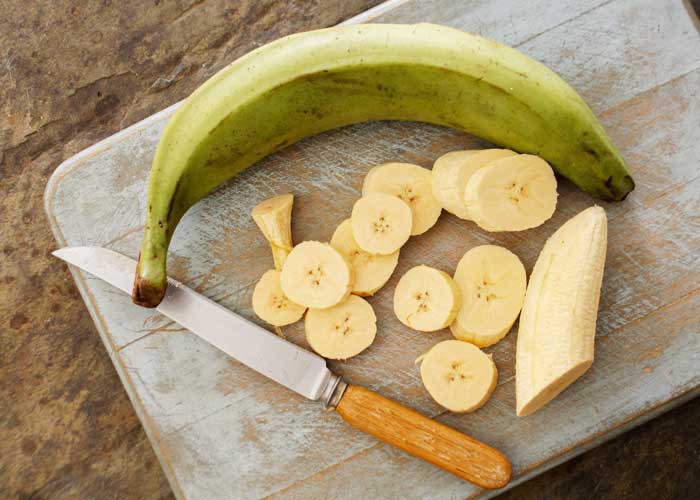
Plantain Nutritional Information
The following data is a based on research by the U.S. Department of Agriculture, Agricultural Research Service. The chart below expands on their base nutritional value of 100 grams of plantain.
An average, medium-sized plantain weighs 0.5 lbs (240g) when peeled.
Plantain Nutrition Chart: 23 Elements Compared
| Nutrients | 100 g | 1 Cup (139g) | 1 plantain (240g) |
|---|---|---|---|
| Calories (kcal) | 155 | 215 | 372 |
| Kilojoule (kJ) | 650 | 903 | 1,560 |
| Carbohydrate | 41.40 g | 57.55 g | 99.36 g |
| Dietary Fiber | 2.20 g | 3.06 g | 5.28 g |
| Potassium (K) | 477 mg | 663 mg | 1,144 mg |
| Magnesium (Mg) | 41.00 mg | 56.99 mg | 98.40 mg |
| Vitamin A | 909 IU | 1,263 IU | 2,181 IU |
| Vitamin B-6 | 0.21 mg | 0.29 mg | 0.50 mg |
| Vitamin C (Ascorbic Acid) | 16.40 mg | 22.80 mg | 39.36 mg |
| Protein | 1.52 g | 2.11 g | 3.65 g |
| Fat (total lipid) | 0.16 g | 0.22 g | 0.38 g |
| Sugars | 21.30 g | 29.61 g | 51.12 g |
| Sucrose | 13.70 g | 19.04 g | 32.88 g |
| Glucose (dextrose) | 3.79 g | 5.27 g | 9.10 g |
| Fructose | 3.82 g | 5.31 g | 9.17 g |
| Starch | 17.90 g | 24.88 g | 42.96 g |
| Vitamin B-12 | 0 | 0 | 0 |
| Calcium (Ca) | 3.00 mg | 4.17 mg | 7.20 mg |
| Iron (Fe) | 0.28 mg | 0.39 mg | 0.67 mg |
| Phosphorus (P) | 37.00 mg | 51.43 mg | 88.80 mg |
| Sodium (Na) | 2.00 mg | 2.78 mg | 4.80 mg |
| Zinc, (Zn) | 0.21 mg | 0.29 mg | 0.50 mg |
| Cholesterol | 0 | 0 | 0 |
Here’s a brief summary of the nutritional value of a single, medium sized plantain.
- Calories: 372
- Total Fat: 0.4 g
- Cholesterol: 0
- Sodium: 4.8 mg
- Potassium: 1144 mg
- Total Carbohydrates: 99.36 g
- Dietary Fiber 5.28 g
- Sugars: 51 g
- Protein: 3.65 g
- Vitamin A: 2,181 IU
- Vitamin B-6: 0.5 mg
- Vitamin C: 39 mg
- Calcium: 7.2 mg
- Iron: 0.67 mg
Many elements (like cholesterol, caffeine, theobromine) are assumed to be zero as they are not naturally occurring in this food. Or they have an insignificant amount.
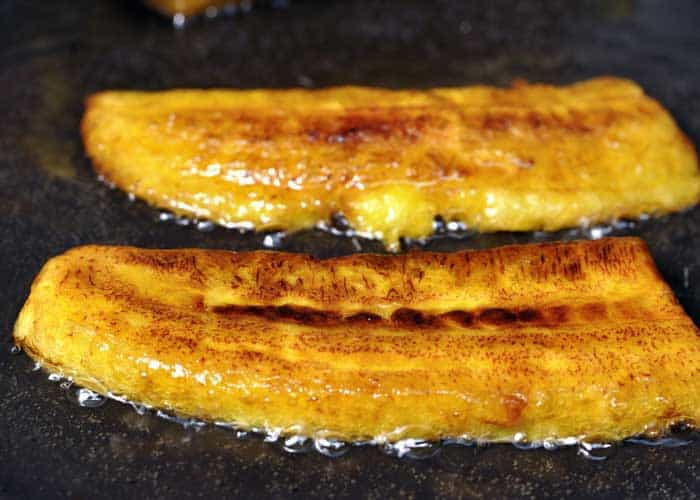
6 Reasons Plantains Are Healthy
Plantains are closely related to the banana, but they’re a distinct food. They’re larger, greener and have a thicker skin.
Unripe plantains are also more starch than sugar. For this reason, they aren’t usually eaten raw.
There are many health benefits of the plantain, including:
1. Weight Loss
The daily recommended fiber intake for healthy adults is 25 grams. A medium-sized plantain can provide 5 grams, which means that a single plantain can net you as much as 20% of your daily fiber.
Why is fiber important? Not only does it aid digestion, but it can also add bulk to your food intake, making you feel fuller for longer periods of time with less calories consumed. This is why high-fiber foods are often recommended to people who are trying to lose weight. Adding plantains to your diet might just help with fitting into those skinny jeans again!
2. Digestion
This goes back to the fiber content of plantains. Fiber helps to regulate things downstairs, so if you’ve been having some trouble in the bathroom, a high-fiber diet can help with getting you back on track. It will simultaneously soften and bulk up your stool to make it easier to pass.
As mentioned previously, fiber can also help with weight loss, and weight loss has been associated with improved digestion thanks to the way that it affects digestive enzymes.
3. Immune-Boosting Properties
Vitamin C is critically important for the immune system, but since humans can’t produce it on their own, we have to turn to other sources to get it.
One of these sources can be plantains. A single plantain can offer as much as half of your daily recommended intake of Vitamin C! It contains 39 milligrams, and the recommended intake is anywhere between 65 – 90 milligrams.
If you don’t already know about the health benefits of vitamin C, get a crash course here.
4. Diabetes Prevention and Treatment
While nothing can cure diabetes, studies have shown that there are effective ways to both prevent it and manage it. One of those ways is to control your blood sugar and keep it from getting too high or too low, and one of those ways is through magnesium.
Plantains can contain as much as 100 milligrams of magnesium in a single serving. Magnesium has been linked to diabetes prevention since it helps with the breakdown of glucose (sugar) in the body.
You’ll want to consult your doctor, of course, if you’re a diabetic who is carefully controlling their blood sugar. But ask them about plantains. They might give you a big thumbs-up.
5. Better Moods
In addition to their fiber and vitamin C, plantains are also a good source of iron, potassium and vitamin B6.
Vitamin B6 is particularly noteworthy because it’s been linked to the production of serotonin, dopamine, norepinephrine and other mood-boosting chemicals in the brain. Humans do produce these naturally, but their levels can fluctuate, and low levels can contribute to things like anxiety and depression.
Long story short: Plantains can make you feel better from the inside out.
6. Versatility in Preparation
You can do just about anything with plantains. They’re big, tasty and accessible everywhere, and their high starch and low sugar content makes them an excellent addition to savory dishes as well as sweet ones.
As for preparation techniques, the sky is the limit. Plantains can be baked, boiled, mashed, grilled, deep-fried and more.
Consider these tasty options:
- In Nigeria, plantains are roasted with palm oil or groundnuts.
- In Uganda, try muchomo, a roasted meat dish served with sweet, roasted plantains (known as gonja).
- In Puerto Rico, they’re fried to a crisp golden brown and served like chips.
- In Rwanda, they make mizuzu – fried plantain chips glazed with honey
- In Haiti, try papita chips from street vendors across the country.
- Tostones from Nicaragua and much of Latin America.
- In traditional villages of northeast Africa, they’re fermented with sorghum and distilled into “banana beers.”
Are you hungry yet? Here are 10 plantain recipes to get started.
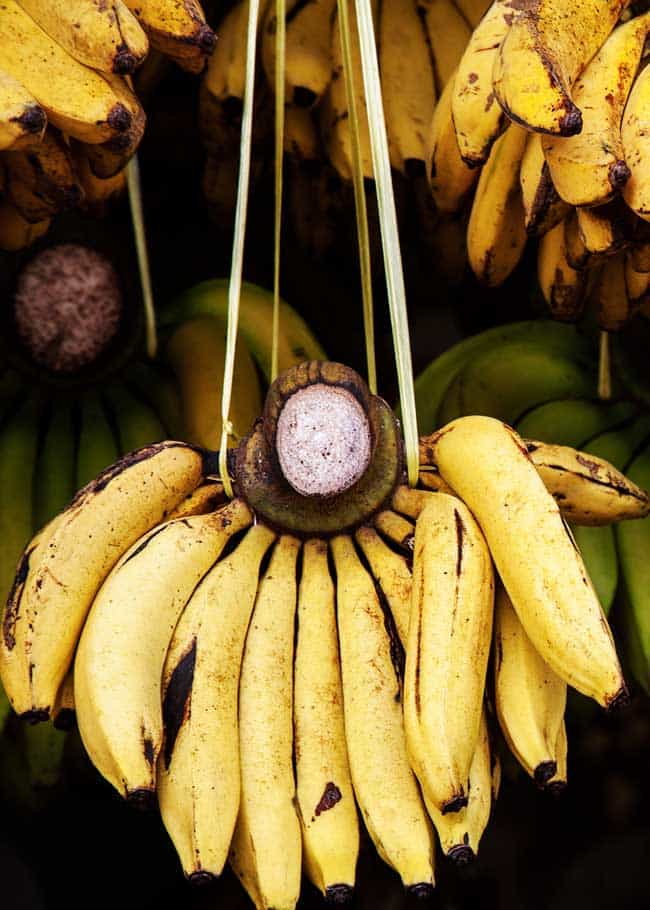
Plantain Nutritional Facts
Do plantains make you gain weight?
No. In fact, plantains can be a great boost to your diet. They’re a high-fiber fruit that will slow your digestion and give you the feeling of being “fuller” for longer periods of time.
They also contain potassium, magnesium, iron, and vitamins C and B6, all of which can contribute to a healthier lifestyle in general.
Are plantains fattening?
Plantains aren’t fattening by themselves. They have a very low amount of fat. However, they’ll easily soak up oil and salt, so you might want to skip the fried plantains if you’re trying to drop a few pounds. Eat some baked, boiled or mashed plantains instead.
Are plantains healthier than bananas?
Plantains and bananas are quite similar in terms of nutrition, so it’s hard to say whether one is better than the other. They have the same number of calories; they have the same amounts of fiber and iron. Plantains contain a little more magnesium, but it’s not a huge amount.
The only major difference between plantains and bananas is that the carbs in plantains come from starch whereas the carbs in bananas come from sugar. However, as plantains ripen, their starches are converted to sugars. This means that a ripe plantain will taste much like a yellow dessert banana!
Learn more about bananas, including nutrition, history, and how to eat them.
Can diabetics eat plantains?
Yes. Unripe plantains have a very low amount of sugar, and they’re also filled with vitamins and minerals that can help to prevent a hypoglycemic effect. In other words, they’re good for keeping your blood sugar stable.
Please note, however, that this nutritional benefit only applies to unripe or green plantains. Once they ripen and become yellow, their starches have been converted to sugars, so they’ll be less healthy for diabetics.
In Nigeria, plantains are used to manage diabetes. Unripe plantains how shown to have a hypoglycemic effect.
Other health benefits
Plantains pack a surprising amount of health benefits into a small green package! Not only do they contain healthy levels of potassium, magnesium, fiber and vitamins A, C, and B6, but they’re also a good source of antioxidants that can help with everything from inflammation to immune system response.
Thanks to the potassium, plantains may also reduce the risk of things like heart disease and high blood pressure.
Last but not least, since plantains are high in complex carbs, they can provide long-lasting energy for your workouts or daily life. They’ll break down slowly and keep you fueled for hours at a time.
Are there carbs in plantains?
Yes. Plantains contain around 57 grams of carbs per cup (139 grams). They definitely aren’t a keto-friendly food.
However, carbs aren’t inherently bad. In fact, complex carbohydrates are essential for fueling your brain, heart, kidney and other organs. They provide energy, and as they break down in the body, they become glucose and get absorbed into your blood.
Long story short: Healthy amounts of carbs are a good thing, and plantains can be a quick and easy way to get them.
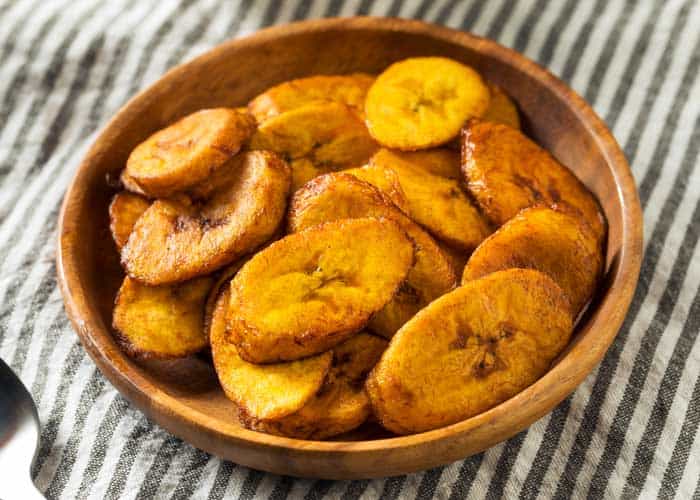
How many calories in a plantain?
There are around 215 calories in one cup of plantain. When you’re actually picking a plantain out of a bunch, however, you’ll need to look at its size to gauge its calorie count.
One cup of plantains measures around 140 grams. Plantain nutrition is heavily dependent on serving size, so pay attention to these measurements.
Does fried plantain make you fat?
Fried plantains are definitely less healthy than their non-fried counterparts. Since it’s easy for them to soak up oil and salt, they become more fattening when fried as opposed to boiled, baked, steamed or mashed.
That said, an indulgence of fried plantains every once in awhile isn’t going to turn you into a balloon! It’s just like any other snack; as long as it’s consumed in moderation, you don’t have to feel guilty. In fact, if you’re switching from fried cakes to fried fruit, you might even argue that it’s a step up in terms of nutrition.
Are boiled plantains healthy?
Yes, boiled plantains are quite healthy. They don’t have any of the oils, fats, salts or sugars of other prepared plantains, and you can enjoy them in many different ways.
For example, you can mash them as a side dish for meats and veggies, or you can distill them for banana juice to add to drinks and desserts. The sky is the limit!
Do plantains have protein?
Plantains have a very small amount of protein (about 3.6 grams in one medium sized plantain) but it’s not enough for plantains to be considered a good source of it.
You’ll need to add something to your plantains if you want to have a high-protein snack. How do you feel about peanut butter?
Plantain Facts
Where are plantains eaten?
Plantains are eaten all over Africa, Asia, Latin America and the Caribbean. They’re particularly popular in developing countries since they’re a versatile and nutritionally rich “staple food,” but they’ve also gotten the gourmet treatment from Western countries.
It’s estimated that plantains provide as much as 25 percent of the carbohydrate requirement for more than 70 million people in Africa.
Why don’t plantains have seeds?
The short answer is that some plantains do have seeds, but since most of them are cultivated and harvested from mutant banana strains that can reproduce without seeds, most of them don’t.
That said, if you’ve ever peeled a banana and noticed little black spots within the yellow pulp, those are the immature seeds that never grew into anything more!
Is a plantain a fruit?
Yes. Fruits are generally categorized as the edible portions of plants that develop from flowers and propagate through seeds. As previously discussed, plantains are often bred without seeds, but they’re still fruits at the end of the day.
How do plantains grow?
Plantains are grown on trees. These trees aren’t actually difficult to cultivate; there are “how-to” guides on the Internet if you’d like to stick one in your own backyard.
They just have a few essential growing requirements such as warm climates and direct, consistent sunlight.
How many types of plantains are there?
There are more than 1,000 species of banana, including plantains. They all belong to the musaceae family.
To talk specifically about plantains, however, there are two recognized types:
- French
- Horn
Each of these types has further sub-types, including dwarfs and giants.
Some species are so notorious that they have their own names and distinctions, including the “Rhino Horn Plantain,” an abnormally long plantain that can reach up to two feet.
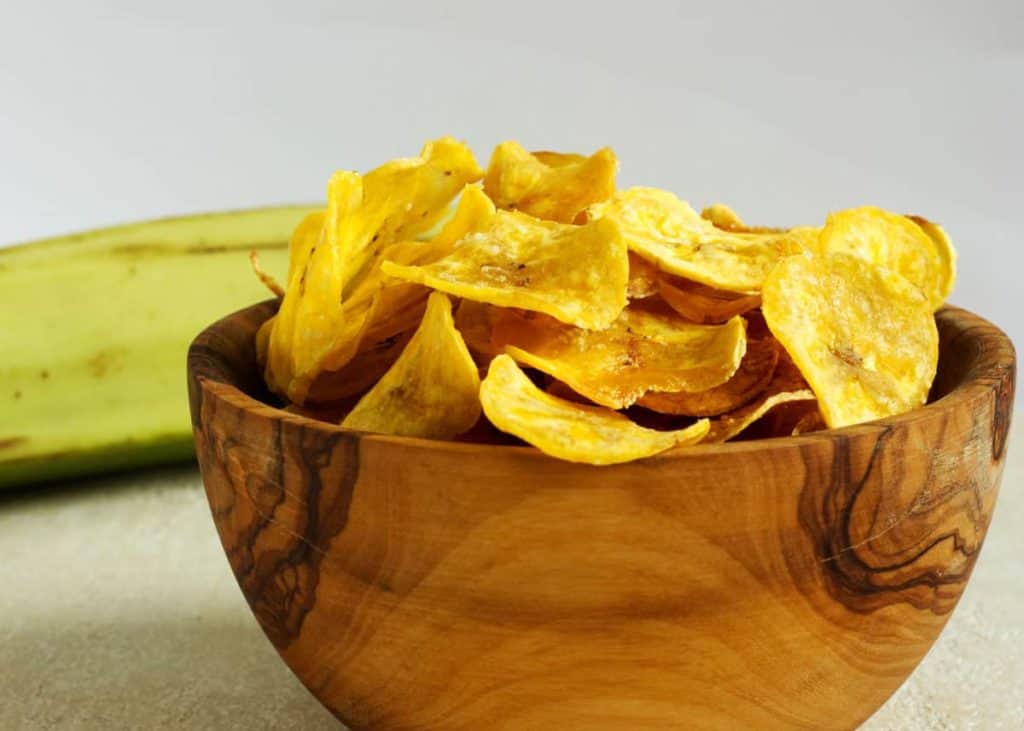
What are some popular ways to prepare plantains?
There are mouthwatering plantain recipes from all over the world, but here are a few standouts:
- Chifles: These are fried plantain chips that are available everywhere from Ecuador to Thailand. Most are small, crunchy and bright yellow while others might be chewy and caramelized to a golden brown.
- Empanadas de Verde: Warm and savory, these empanadas are stuffed with plantains, cheese, onions and meat.
- Patacones: Another type of fried plantain, these are typically flattened into discs and served as a side not unlike French fries or potato wedges. They’re crunchy on the outside and soft on the inside.
- Chapo: For this thick, tasty beverage, plantains are boiled and mixed with cinnamon, cloves, sugar and water. Serve it hot by the fire to keep away winter’s chill!
Plantains can also be served as street food and finger snacks with various toppings.
For example, plantains are often grilled over a charcoal fire in the Congo, and vendors will add their own spices, sauces or sugars.
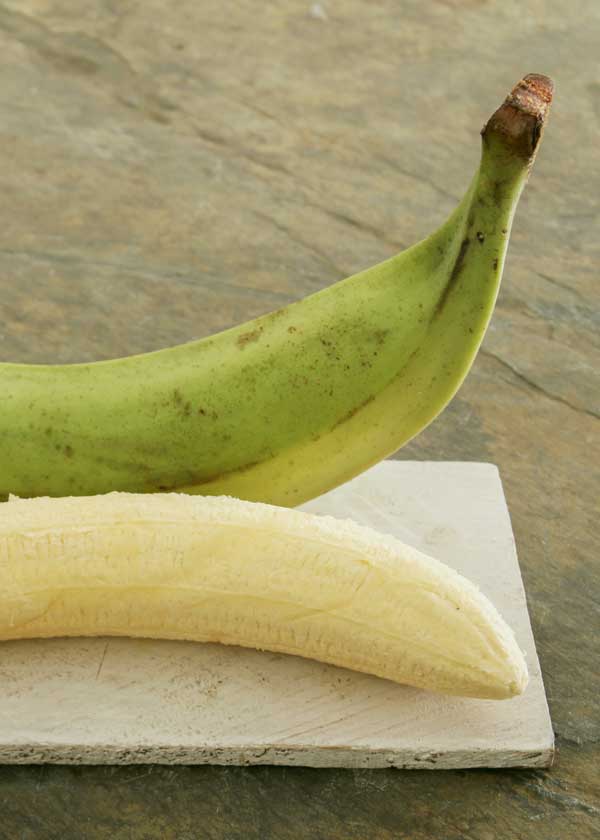
Cuban foods make good use of plantains.
Your Turn
What do you think of these plantain facts? Are you intrigued by the many different ways to prepare them? Are you itching to try some of these exotic recipes? Maybe you’re even ready to start traveling the world and hitting the food stalls firsthand. Let me know in the comment section!


